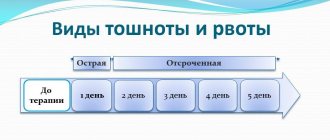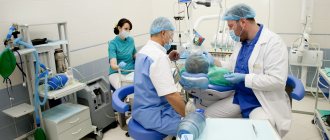Premedication during chemotherapy in a broad sense is required for everyone starting a cycle, because it allows you to speed up subsequent recovery. In a narrow sense, premedication is necessary when using a small number of specific anticancer drugs that cause life-threatening complications already during administration. The second indication is a mandatory treatment option, and the first is available to very few patients in the proper amount.
- What is chemotherapy?
- Premedication and preparation for chemotherapy
- Improving liver function before chemotherapy
- Prevention of blood clots
- Chemotherapy course prices
What is chemotherapy?
For patients, chemotherapy is any antitumor treatment, while formally it is assumed that only cytostatics are used without hormonal, targeted drugs and immuno-oncological agents.
Chemotherapy kills cells, malignant and normal, a single dose of a cytostatic is not the maximum effective amount of medicine, but a mass of a chemical reagent that allows one to maintain some balance between possible effectiveness without intolerable toxicity.
Before entering into widespread practice, an antitumor drug is comprehensively tested in a clinical trial, which involves patients suffering from advanced cancer who have undergone more than one course of chemotherapy. The effect of the drug on the life expectancy of patients and the range of adverse reactions are being studied. The drug receives approval for use if it prolongs life by several weeks, but only with a minimal percentage of severe toxicity.
The introduction of an anticancer drug into clinical practice does not stop its study in observational studies, where side effects are scrupulously calculated; it should be noted that the effectiveness of the drug is often increased because it is used not only on patients deprived of prospects, as in a clinical trial, but also on primary patients .
PRE-MEDICATION: PHARMACOLOGICAL RATIONALE PAUL F. WHITE PH D MD
The clinic traditionally uses specific medications to ensure the proper condition of the patient before anesthesia. As Beecher noted over 25 years ago: "Empirical procedures, which are the habit of a good doctor, are and will be alive." In those days when almost all anesthetics were inhalational, the foundations for the rational use of premedication were laid. In order to minimize the side effects of these drugs, the patient was taken to the operating room after the administration of sedatives and drugs that block the secretion of the oral glands. Today, the main reason for prescribing premedication is to make anesthesia and surgery the least traumatic for the patient’s psyche. Indications for premedication are a feeling of anxiety and restlessness in the patient, the creation of amnesia and analgesia, a vagolytic effect and the prevention of aspiration of acidic gastric contents and/or postoperative nausea and vomiting. Oral administration of drugs is used; they are also administered per rectum, intramuscularly or intravenously. Alternative routes of drug administration are described in the anesthesiology literature (eg, mucous or nasal). Based on his own clinical experience, the anesthesiologist may use sedatives, hypnotics, major tranquilizers, narcotic analgesics, anticholinergics, drugs that affect gastric motility, or antihistamines. Most often, a combination of two or more drugs from different groups is used. An important reason for this is that doctors have not yet developed a consensus regarding premedication. In general, it is believed that the patient's anxiety and nervousness are the leading factor that needs to be controlled in the preoperative period. The frequency of these manifestations ranges from 40 to 80%. Physiological stress caused by upcoming anesthesia and surgery negatively affects the patient’s psyche and promotes the production of stress hormones. The incidence of severe preoperative stress is higher in women than in men, as well as in all those patients who constantly receive sedatives. The most common causes of preoperative stress are: fear for one's health, fear for the outcome of the operation, separation from family, an unclear future, fear of anesthesia and discomfort in the postoperative period.
Psychological preparation
The psychological aspect of preoperative preparation is largely determined by the visit of the anesthesiologist and his conversation with the patient. Even a brief description of the anesthesia plan and the course of the operation removes the fear of the unknown and unconsciousness in the patient. In 1963, Egberg et al. reported that patients who were seen by an anesthesiologist before surgery were significantly calmer on the day of surgery. Preoperative preparation in the form of conversation and explanation is very effective in eliminating anxiety in patients. Moreover, it is reported that a special booklet on anesthesia was much less effective than a personal conversation between the anesthesiologist and the patient. Although a visit to an anesthesiologist significantly reduces the patient's anxiety, in most cases drug premedication is also necessary, consisting of sedatives and antihistamines (for example, barbiturates, hydroxazine and promethacin). However, the most commonly used drugs are those that have both a sedative and anxiolytic effect (i.e., benzodiazepines).
Pharmacological preparation
The rational use of premedication drugs can provide the patient with minimal anxiety and fear when taken to the operating room, and it is highly desirable that these drugs do not have uncomfortable side effects. From the patient's point of view, absence of memories (amnesia) and reduction of anxiety are the main goals of premedication. However, most patients want to remember everything that happened to them before and after the operation. Therefore, prolonged amnesia may even increase anxiety. The most controversial issues in terms of premedication are: the drugs themselves, the route and time of their administration to the patient. Most often, oral medications are given to the patient 60-90 minutes before anesthesia. Even with intramuscular administration of drugs, it takes at least 30-60 minutes for their effect to fully develop. Most often, drugs are administered in such a way that the staff has some time left to deliver the patient to the operating room. This review discusses the comparative clinical pharmacology of the drugs most widely used for premedication. After reviewing the many studies on premedication that have emerged over the past 25 years, one can agree with Forest et al that “most clinical studies on premedication drugs have lost their accuracy and relevance.”
Sedatives, hypnotics and “major” tranquilizers
The most popular drugs among anesthesiologists remain sedatives and hypnotics, which include barbiturates and benzodiazepines. These drugs inhibit central nervous system activity in a dose-dependent manner. Although this process may differ in detail when using different drugs, in principle their effect on the central nervous system is similar. Secobarbital and phenobarbital are widely used for premedication, since they have a fairly pronounced sedative effect without serious depression of the cardiovascular system and respiration. However, after the advent of benzodiazepines, barbiturates became less popular. Comparative studies have shown that benzodiazepines are more effective for premedication and are easier to accept by patients than barbiturates. For many years, chloral hydrate, triclovos and barbiturates were the most popular sleeping pills. Recent studies have shown that benzodiazepines (flurazepam, lorazepam, triazolam, temazepam) are much preferable to barbiturates as hypnotics prescribed the night before surgery. Benzodiazepines have effects that make them the most preferred for premedication (sedative effect, anticonvulsant activity, amnesia, sedation and even muscle relaxation). In addition, there is a specific benzodiazepine antagonist - flumazenil, which is suitable if it is necessary to quickly relieve the effects of benzodiazepine overdose. There are also a large number of drugs in this group for oral use. Diazepam, a typical representative of the group of benzodiazepines, causes a decrease in the patient's anxiety depending on the dose, has a sedative effect and the ability to cause amnesia. How does diazepam compare to lorazepam? Although both drugs have approximately the same ability to cause sedation and have the same anxiolytic effect, when using diazepam, patients more often report pain at the injection site and more often develop thrombophlebitis, while when using lorazepam, patients wake up longer after anesthesia. However, the most important differences between the two drugs are the time-effect relationship for each. Compared to lorazepam, the effect of diazepam on the central nervous system develops almost immediately after intravenous administration and lasts 30-60 minutes after it. The experiment also revealed that benzodiazepine receptors have a higher affinity for diazepam than for lorazepam. So, although diazepam has approximately twice the half-life of lorazepam (20-40 hours compared to 10-15 hours), its duration of clinical action is shorter because it binds to benzodiazepine receptors very quickly. The main metabolite of diazepam, dismethyldiazepam, has some pharmacological activity, while lorazepam is immediately converted to inactive metabolites. Finally, the distribution and metabolism of lorazepam is minimally affected by the liver, whereas diazepam is metabolized primarily in the liver. Despite this, in elderly people, the dose of benzodiazepines during premedication should be reduced, since even a relatively small excess of the dose can cause central nervous system depression in them. As an alternative to these widely used drugs, both triazolam (0.125 - 0.5 mg orally) and temazepam (15-30 mg orally) can be used, and in many situations they have undoubted advantages. These benzodiazepines are rapidly absorbed when administered orally and are rapidly metabolized to inactive metabolites. Midazolam is a new drug with a short half-life (2-4 hours) and is approximately twice as potent as diazepam. As a sedative, it is about three to five times more powerful than the others. Since midazolam is poorly soluble in water, a solvent (propylene glycol) is required for its administration, which can irritate the vein wall and affect the absorption of the drug when administered intramuscularly. Due to the rapid development of the sedative and anxiolytic effect, midazolam seems to be a good drug for premedication both orally and intramuscularly and rectally in pediatric patients. In addition, its short half-life reduces the risk of drug accumulation when used multiple times. Midazolam is rapidly metabolized in the liver to inactive metabolites. Therefore, when administered orally, the use of the drug is somewhat limited by its high metabolism in the liver. Similar to diazepam, the clearance of midazolam is slightly reduced in elderly and geriatric patients, so its dose must be reduced in such patients. Clinical studies have shown that midazolam, compared to other sedative drugs, has a certain advantage when administered intramuscularly, and its action develops somewhat faster than that of other drugs, and the awakening of patients after anesthesia also occurs faster. Compared with benzodiazepines, major tranquilizers (phenthiazines and butorphenones) and antihistamines (hydroxazine and diphenhydramine) provide only sedation. Although the sedative effect of these antipsychotic drugs is very strong, this can also have negative sides (too strong sedation and the inability for the patient to explain his thoughts). Interestingly, many doctors are mistaken in terms of the presence of anxiolytic effects in these drugs. Droperidol is an antipsychotic of the butorphenene class, which is very popular among anesthesiologists and is used for premedication due to its strong antiemetic effect. Obese patients, patients undergoing ophthalmic and gynecological procedures, patients receiving narcotic analgesics or etomidate, and those patients with a history of nausea and vomiting from previous anesthesia often report that the administration of droperidol significantly improved their condition. Low (0.25-1.25 mg) doses of droperidol can relieve patients from postoperative nausea and vomiting. However, even very low doses of droperidol can cause extrapyramidal symptoms due to its ability to block histamine receptors. Hydroxazine is a unique non-phenothiazine tranquilizer that has an antihistamine effect, depresses the central nervous system, has a sedative, anxiolytic effect, and has an antiemetic, bronchodilator and anticholinergic effect. Compared to benzodiazepines, it has a more pronounced anxiolytic effect and also causes amnesia. Although its analgesic capabilities are limited, when used together with narcotic analgesics, fairly effective pain relief can be obtained. Interestingly, compared with droperidol as a prophylactic antiemetic, hydroxazine is more effective in doses that have approximately the same sedative effect and the time of awakening of patients after surgery is the same. Diphenylhydramine (0.5-1.0 mg per kg orally) is another antihistamine that is recommended for premedication to prevent intraoperative allergic reactions in patients with a history of chronic allergic reactions, as well as for those patients undergoing manipulations that are known to lead to to allergic reactions (scintigraphic studies, chemotherapy). In patients with an increased risk of allergic reactions, an H-2 receptor locator is prescribed along with diphenhydramine.
Opioids - narcotic analgesics
In the past, narcotic analgesics have been used as premedication to facilitate induction and to reduce the need for inhalational anesthetic. However, the ability of narcotic analgesics to reduce the need for inhalational anesthetic is very clinically insignificant. Indeed, the traditional use of narcotic analgesics as premedication has been questioned by many researchers. Coheen and Beecher many years ago Fr. Interestingly, when morphine alone is prescribed, patients experience some feeling of dysphoria in about 80% of patients who do not experience pain, and only 10% experience a feeling of euphoria. For patients with pain syndrome or dependence on narcotic analgesics, the situation can be very different. The main problem associated with the use of narcotic analgesics is the huge number of their side effects: nausea, vomiting, itching, respiratory depression, agitation and others. Recently published studies have reported that nausea following narcotic analgesic administration occurs in 40 to 57 percent of cases. When narcotic analgesics are prescribed either alone or in combination with sedatives, the risk of preoperative respiratory depression is further increased. Premedication with a combination of morphine and scopolamine can significantly reduce saturation during transport of the patient to the operating room and during preparation for invasive monitoring. Adding lorazepam to reduce anxiety does not increase respiratory depression as does the combination of morphine and scopolamine. However, the use of lorazepam in cardiac surgical patients (compared to the combination of morphine with scopolamine) significantly more depresses the patient's blood circulation during induction. Many drugs are used in an attempt to reduce the side effects of narcotic analgesics and increase their effectiveness. Scopolamine, which has central anticholinergic activity, increases the anxiolytic and sedative effects of narcotic analgesics, however, it does not reduce the side effects of morphine. Although droperidol reduces the incidence of nausea and vomiting associated with the use of narcotic analgesics, the incidence of dysphoric reactions with this combination is unpredictable. Some strange reports claim that there is potentiation of their analgesic properties between narcotic analgesics and sedatives. These observations do occur because a calm person is less sensitive to pain, but this does not mean that there is any pharmacodynamic interaction. Promethacin is a popular phenothiazine drug that improves the anxiolytic and sedative effects of morphine when premedicated. At the same time, the analgesia obtained by combining morphine with hydroxazine is much more effective than the analgesia obtained by using morphine alone. Most often, these combinations are safe, but it is known that the combination of benzodiazepines and narcotic analgesics can cause hypoxemia and apnea.
Anticholinergics
The use of anticholinergic drugs as a standard part of premedication is associated with their ability to sharply reduce salivary production and have a vagolytic effect. Although most researchers do not consider this to be decisive, the use of these drugs as a component of premedication has long been a tradition. During induction with inhalational anesthetics they do reduce salivary gland secretion, in addition to this, atropine prevents reflex bradycardia and circulatory depression in young children. Glycopyrollate, a drug with a peripheral anticholinergic effect, is also used for premedication. In adults, a dose of glycopyrollate of 0.2 mg IM and a dose of atropine of 1.5 mg IM have the same effect, but glycopyrollate does not have a significant effect on the patient’s heart rate. In addition, none of these drugs affects the volume and acidity of gastric contents. Preoperative administration of glycopyrollate does not reduce the risk of developing aspiration pneumonitis in patients at risk. Awakening from anesthesia is faster with glycopyrrolate because it does not cross the blood-brain barrier. Another centrally acting anticholinergic drug, scopolamine, is approximately eight to ten times more active than atropine, but is much weaker in its peripheral effect. Recent studies have shown that scopolamine at a dose of 0.5-1.5 mg per 72 hours transdermally has a sedative and antiemetic effect, and also inhibits the secretion of the salivary glands. However, this effect is less predictable in patients with muscle weakness and episodes of nausea and vomiting after previous anesthesia. Unfortunately, even small doses of scopolamine can cause delirium, weakness, speech impairment, hallucinations and coma, which is collectively called “central cholinergic syndrome” .
Drugs affecting gastric motility
Metoclopramide increases the tone of the lower esophageal sphincter, reduces intragastric pressure and improves motility of the stomach, esophagus and initial parts of the small intestine. It has peripheral cholinergic and central antidopaminergic effects. The most common side effects of metoclopramide should be considered dystonic reactions (that is, extrapyramidal symptoms). Some researchers claim that metoclopramide has an antiemetic effect, while others dispute its existence. However, the use of metoclopramide in combination with droperidol intravenously prevents the development of postoperative nausea and vomiting even better than droperidol alone in low doses. In addition, metoclopramide can be used as an adjuvant to H-2 histamine blockers to prevent aspiration. A new drug in this class, clebopride, has an effect on gastric motility and an antiemetic effect, however, its role in clinical anesthesia is not yet great.
H-2 histamine blockers
Anticholinergics, drugs that affect gastric motility and, more recently, H-2 histamine blockers are often prescribed to patients who are at increased risk of developing postoperative pneumonitis. Patients with impaired consciousness, swallowing abnormalities or gastrointestinal motility disorders, as well as patients with a “full stomach”, only benefit from the use of these drugs. Pregnant, obese and diabetic patients also require preoperative administration of these drugs. The use of H-2 histamine blockers increases the pH of gastric contents in the preoperative period, depending on the dose, and also reduces basal gastric secretion. In general, multiple doses (the evening before surgery and the morning of surgery) are more effective than a single dose in reducing gastric acidity and volume. Both commonly used H-2 histamine blockers (cimetidine and ranitidine) significantly increase gastric pH within an hour of parenteral administration. Although these drugs can reduce the risk of aspiration, none of them can completely eliminate this risk. Thus, the use of these drugs in no way reduces the importance of careful intraoperative monitoring and protection of the patient's airway during intubation. In addition, cimetidine has the potential to inhibit hepatic oxidase enzyme activity, thereby prolonging the elimination time of some drugs used during anesthesia (diazepam, chlordiazepoxide, theophylline, propranolol and lidocaine). Ranitidine, a more modern H-2 histamine blocker, is more powerful, specific, and longer lasting than cimetidine. Ranitidine at a dose of 100-200 mg orally is as effective as cimetidine at a dose of 200-400 mg orally, and its use significantly reduces the risk of postoperative pneumonitis and there are practically no side effects or negative interactions between it and other drugs. What do anesthesiologists themselves think about this? Research data suggest that 40 to 80 percent of patients undergoing elective surgery have a pH < 2.5 and or a gastric volume greater than 25 ml at the time of tracheal intubation. These data can be considered as risk factors for the development of Mendelssohn syndrome. So, it is necessary to prevent aspiration, since after it a severe complication develops - aspiration pneumonia. What to use as a prophylactic agent? Most researchers argue that antacids can help in this situation. Unfortunately, colloidal suspensions of antacids cause serious lung damage when aspirated, and only the widely available solid dosage forms of antacids (sodium citrate) can help, but they are less effective. Preoperative administration of sodium citrate raises gastric pH above 2.5 in 64-84 percent of patients, however, this drug increases the volume of gastric contents. Compared with cimetidine, citrate is much less effective in preventing aspiration pneumonitis. Preoperative administration of cimetidine 300 mg or ranitidine 150 mg orally in combination with metoclopramide significantly reduces the risk of developing postoperative aspiration pneumonitis. O Sullivan et al demonstrated that the combination of metoclopramide and ranitidine was most effective in preventing severe aspiration pneumonitis.
Premedication in an outpatient setting
We often see and hear statements that premedication in outpatients should be minimal, since massive premedication increases the time it takes for the patient to awaken. The information we obtained from the anesthesiological literature refutes this belief. Clarke and Hurtig reported that intramuscular premedication with meperidine and atropine did not increase the patient's time to awakening after outpatient surgery. More recent studies have shown that premedication with short-acting narcotic analgesics (eg fentanyl intravenously) may even reduce the time it takes to awaken patients due to their analgesic properties and reduced need for anesthetic. In a retrospective study, Meridy reported that preoperative administration of diazepam or hydroxazine did not significantly increase patient awakening time. In pediatric outpatients, oral administration of diazepam or hydroxazine very little increases the patient's time to awakening. Premedication with a combination of diazepam, meperidine and atropine also showed its potential in terms of ensuring the safety of anesthesia and practically did not increase the time of awakening in pediatric practice. In a double-blind study, Jackobsen et al found that oral diazepam significantly reduced preoperative discomfort without any significant wake-up time. Midazolam is one of the most suitable drugs for outpatient premedication due to the fact that its effect after intramuscular administration develops very quickly. Midazolam reduces anxiety in patients before surgery and does not affect the time of awakening after short-term outpatient procedures. Compared to the combination of morphine and scopolamine, midazolam has a much smaller range of side effects. Temazepam and lormetazepam have proven themselves well as oral drugs, which are superior to all other benzodiazepines when used in outpatient practice. Are antiemetics needed in outpatient practice? Nausea and vomiting are two of the most common problems in ambulatory anesthesiology. Etiological factors may include the patient's condition (for example, pregnancy), assisted breathing (air in the stomach) and drugs (fentanyl, etomidate, isoflurane, nitrous oxide). Some researchers believe that droperidol is an effective antiemetic, however, the use of droperidol can dramatically prolong the time awakening the patient due to its rather pronounced sedative effect. Despite this, droperidol should be used in those outpatients in whom a high risk of postoperative nausea and vomiting is expected (laparoscopy, abortion). On the other hand, metoclopramide can be used alone or in combination with droperidol, either orally or parenterally. Thus, in outpatient surgery it is impossible to do without premedication, since it is always necessary to minimize the risk of aspiration, as well as create an appropriate psychological background for the patient.
conclusions
Traditionally, premedication is those medications that are prescribed to a patient who is undergoing surgery. However, preoperative preparation should not be limited only to the medication component; it should also include a psychological component. The psychological moment is provided by a conversation between the anesthesiologist and a conversation with the patient. A wide range of pharmacological agents are used for premedication, which have a variety of effects. Most anesthesiologists agree that the goal of modern premedication is an anxiolytic effect. Prevention of aspiration also remains relevant. The choice of drug depends on the weight, age of the patient, the severity of his condition and the upcoming surgical treatment. The point of view of some doctors who use “standard premedication” is extremely erroneous, since there are no two identical patients and no two identical anesthesiologists.
Journal of Clinical Anesthesiology, 1993, Vol.36, Num. 5
Premedication and preparation for chemotherapy
Special medicinal preparation - premedication requires a few drugs, as a rule, already at the “first drop” they threaten either a severe allergic reaction or a difficult to tolerate whole complex of symptoms - a syndrome.
For example, preparation for intravenous drip administration of taxanes begins 12 hours in advance, when the patient takes a huge dose of hormones that prevent a severe hypersensitivity reaction, which in the first clinical trial led to the death of 2% of patients.
Before the administration of irinotecan, to relieve the cholinergic syndrome with painful diarrhea, fainting, profuse sweating, leakage of tears and saliva, toxicity-reducing and long-known drugs are administered. In clinical studies, the syndrome was observed in every 11th patient; before the introduction of mandatory premedication, such patients could not receive the necessary treatment.
These are special cases of drug preparation for the use of cytostatics; in a broad sense, every patient needs preparation for chemotherapy. If in the first cycle we can limit ourselves to the prophylactic use of antiemetics, then in all subsequent cycles it is possible to prevent adverse reactions, based on the experience of the initial use of the drug combination and taking into account the consequences, including forced malnutrition.
Preparation requires an individual approach, because it takes into account what happened to a particular patient during the previous treatment, the loss of his body, the speed of recovery and tissue repair reserves, not forgetting concomitant diseases. General standard approaches such as “everyone is the same” are also appropriate, but of little use; in our Clinic, an individual program of preparation for chemotherapy is developed for each patient.
Nonspecific premedication
The main goals of nonspecific premedication are:
- suppression of fear;
- analgesia;
- achieving relaxation;
- suppression of hypersalivation;
- elimination of the gag reflex;
- prevention of allergic reactions.
Depending on the expected result, there are 5 types of premedication:
- sedative;
- antiallergic;
- analgesic;
- anticholinergic;
- combined.
Sedative type
Sedative medication helps the patient get rid of anxiety, fear and psycho-emotional stress. To achieve the required result, the patient is prescribed mild sedatives or minor tranquilizers (meprobamate, mezapam, trioxazine, amizil, seduxen, diazepam, mebicar, dormicum, grandaxin and others). In some cases, the doctor may decide to use sedatives of plant origin (valocordin, corvalol, novopassit, tinctures of peony, motherwort and valerian). The use of these funds allows you to put the patient into a state of deep, medium or superficial sedation.
Analgesic type
The main goal of analgesic premedication is to significantly increase the pain threshold. To achieve this goal, non-narcotic and narcotic analgesics are used (tramadol, fortal, lornoxicam, tramal, ketrodol, xefocam-rapid, nubain, metamizole sodium, ibuprofen, ketorolac tromethamine and others). It is worth noting that drugs of this type not only have an analgesic effect, but also enhance the effect of local anesthetics.
Antiallergic type
The purpose of antiallergic premedication is to prevent histamine reactions. Patients with a severe allergic history can be prescribed antihistamines of the first (Suprastin, Claritin, Diphenhydramine, Tavegil) and second generation (Erius, Kestin, Zyrtec, Telfast, Parlazan). When prescribing drugs, dentists take into account the fact that first-generation drugs have both antihistamines and sedative, anti-inflammatory and anticholinergic properties.
Cholinergic type
The purpose of anticholinergic premedication is to suppress the gag reflex and block all manifestations of hypersalivation. During this procedure, the patient may be prescribed antisalivation and (or) vagolytic agents. When treating patients with a pronounced gag reflex, haloperidol, clozapine, triftazine or droperidol are used. In turn, drugs such as scopolamine, Robinul and glycopyrronium are used to inhibit the secretion of the salivary glands.
Combined type
Combined premedication involves the use of combinations of medications rather than individual medications. To achieve the best effect, combinations of tranquilizers, anticholinergics and analgesics are used. The doctor who prescribes must carefully ensure that the drugs that have the necessary effect on the body do not disrupt homeostasis.
Improving liver function before chemotherapy
All anticancer drugs damage liver cells to varying degrees. The patient may be a carrier of factors that aggravate toxic damage: age-related changes, hereditary diseases and underlying liver disease, negative eating behavior with fat deposition in the liver parenchyma, and chronic diseases that require long-term medication.
Clinical manifestations of hepatotoxicity are variable, ranging from changes in blood biochemistry to liver failure.
After toxic hepatitis is established, chemotherapy should also change:
- in grade 1, regular blood test monitoring is sufficient;
- at grade 2, the dose of the drug is reduced;
- at grade 3-4, treatment is stopped.
To relieve the manifestations of drug toxicity, symptomatic therapy of liver complications and support of organ function with heptral and ursodeoxycholic acid (UDCA) drugs involved in the metabolism of hepatocytes are carried out; sometimes there is a need for replacement therapy with albumin. The results of symptoms are assessed by biochemical blood parameters, and therapy may take several months.
But you don’t have to wait for hepatotoxicity, because there is a real opportunity to maintain the health of hepatocytes, delay or significantly reduce the manifestations of toxic hepatitis. You will be told how this is done after the examination in our clinic.
Methods of influence
In dentistry, there are two forms of premedication:
- Specific – involves the implementation of preventive measures aimed at preventing negative reactions that may occur in patients with identified somatic abnormalities. Recommended for diagnosed hypertension, coronary artery disease, asthma and heart pathologies. The volume and content of drugs are determined based on the clinical picture.
- Nonspecific - carried out for the purpose of pain relief and suppressing feelings of fear, as well as as a prevention of an allergic reaction.
It is worth noting that for the second form of premedication, an additional classification is used, within which the following types of effects are distinguished:
- Cholinergic – prevention of vomiting due to vagolytic drugs;
- Combined – a combination of various medical products;
- Sedative – mental relaxation achieved through tranquilizers and sedatives;
- Analgesic – reducing sensitivity to pain due to narcotic and other anesthetics;
- Anti-allergenic – prevention of the development of histamine reaction.
Medicines used
Among the most common and potent drugs prescribed as part of premedication are substances of the benzodiazepine category. The option with the greatest activity is Phenazepam, which has a pronounced sedative effect that helps suppress fear and eliminate anxiety. In addition, the drugs used include substances such as Diazepam, Meprotan, Trioxazine and others.
In the presence of constant, persistent fear, accompanied by increased agitation and motor activity, we prescribe Gidazepam. The composition has universal properties and is characterized by accelerated absorption of elements.
In some situations, premedication allows the use of placebos - neutral drugs that have no effect, but at the same time help suppress anxiety.
Premedication in pediatric dentistry
Treatment of young patients requires a special approach. The tasks assigned to the doctor include:
- Removing mental and emotional arousal;
- Creating conditions for neurovegetative stabilization;
- Slowing down the metabolic cycle;
- Reducing the volume of bronchial secretion and salivation.
The lytic formulations used are a combination of drugs, the use of which at an early age necessitates careful dosing and close monitoring. During analgosedation, it is not recommended to use pharmacological drugs, which are characterized by a side effect in the form of a depressive state.
It is important to carry out all procedures taking into account the physiological characteristics of the development of the patient’s body, characteristic of an early age, as well as the psycho-emotional status caused by worries about upcoming medical procedures. After all, the main task solved by a pediatrician is the elimination of all psychological and pain factors in the patient, the absence of which allows you to comfortably and calmly endure the prescribed manipulations, and form a positive attitude towards the need for dental procedures that will have to be faced as you grow older.
Prevention of blood clots
Every cancer patient has a risk of thrombosis, and with chemotherapy this risk increases ninefold. Today, the prevention of thrombotic complications is included in the standard of preoperative preparation and management of the patient after surgery. It is not always possible for a patient to receive the necessary treatment during chemotherapy, since prescribing anticoagulants is not within the scope of the oncologist’s professional capabilities and also requires regular monitoring of indicators.
If an examination and a visit to a specialist are necessary to prescribe anticoagulants, then during chemotherapy there are no obstacles to the mechanical prevention of blood clots with stockings and bandages. In addition to the “ancient” methods, during chemotherapy, hardware pneumatic compression and venous pumps are possible; after a previous thrombosis, a special clot catcher is installed in a large vein - a high-tech vena cava filter.
Specific premedication
Objectives of specific premedication
The main goal of specific premedication is to completely eliminate or reduce the severity of disturbances in the functioning of the body caused by concomitant diseases. In other words, drug preparation of this type is carried out in order to prevent the occurrence of complications in patients suffering from general somatic pathologies.
Indications for specific premedication are:
- ischemia;
- hypertonic disease;
- paroxysmal tachycardia;
- thyrotoxicosis;
- bronchial asthma;
- early infective endocarditis;
- congenital cardiac diseases;
- rheumatic heart disease;
- heart valve defects and other pathologies.
The choice of drugs necessary for the procedure, determination of their dosage and duration of administration is made by the doctor individually, taking into account their clinical effect, age and condition of the patient.
Premedication, both specific and nonspecific, can be carried out either independently or in combination with local anesthesia. A competent selection of drugs for drug preparation and a professional approach to its implementation provide the patient with peace of mind and comfort during any dental procedures, making dental treatment a painless and pleasant procedure.
Doctors at 24-hour dentistry “A.Dent” have sufficient experience in the type of premedication.
Chemotherapy course prices
- Consultation with a chemotherapist— RUB 6,900.
- Carrying out intravesical chemotherapy (without the cost of medications) - RUB 26,400.
- Intraperitoneal chemotherapy (without the cost of medications) - RUB 24,100.
- Immunotherapy (without the cost of medications) - RUB 19,000.
- Intrathecal chemotherapy - RUB 26,600.
- Carrying out hyperthermic intraperitoneal chemotherapy - RUB 352,000.
- Chemotherapy using an infusion pump for 1 day (without the cost of medications) - RUB 22,600.
- Carrying out anti-PD-1 therapy - RUB 423,500.
Euroonco clinics specialize in the treatment of all known malignant tumors; we have brought together oncology professionals and doctors of other specialties. Ask your oncologist what can be done in your case before and after the course.
Book a consultation 24 hours a day
+7+7+78
Bibliography:
- Somonova O. V., Antukh E. A., Elizarova A. L., et al. / Practical recommendations for the prevention and treatment of thromboembolic complications in cancer patients // Malignant tumors: Practical recommendations RUSSCO #3s2, 2018 (vol. 8).
- Tkachenko P. E., Ivashkin V. T., Mayevskaya M. V. / Clinical recommendations for the correction of hepatotoxicity induced by antitumor therapy // Malignant tumors: Practical recommendations RUSSCO #3s2, 2022 (vol. 8).
- Antithrombotic Therapy and Prevention of Thrombosis, 9th ed: American College of Chest Physicians Evidence-Based Clinical Practice Guidelines // Chest Am Coll Chest Phys.; 2012
- Khorana AA, Kuderer NM, Culakova E., et al./ Development and validation of a predictive model for chemotherapy-associated thrombosis// Blood 2008; 15.









